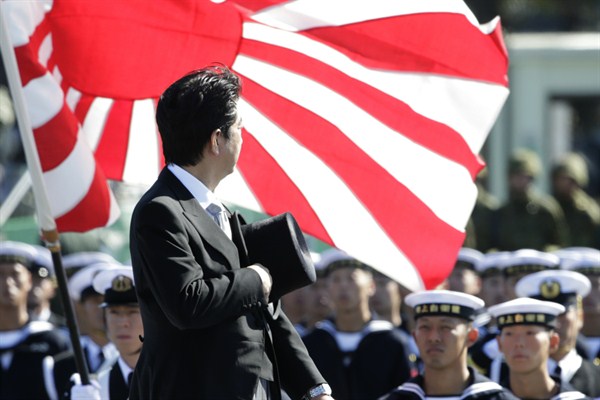Japan’s postwar constitution, promulgated in 1947 under U.S. occupation, has shaped the country’s international role ever since. But now that may be changing. Since assuming office for the second time in December 2012, Japanese Prime Minister Shinzo Abe has implemented a rapid succession of security policy reforms. Abe’s efforts to refocus Japan’s attention on its defense needs and adopt policies that have long been seen as taboo have drawn global attention.
Japan’s immediate neighbors have decried these reforms, citing their still sensitive World War II-era memories of a very different Japanese military. South Korea has been especially critical of Abe’s reinterpretation of Japan’s postwar constitution to allow the military to work alongside other national militaries, but China also worries that Abe may be leading his country in a new, dangerous direction. In contrast, U.S. policymakers, who have long hoped to see Japan take a more active regional security role, have welcomed many of Abe’s reforms. Last month, during the prime minister’s visit to Washington, the U.S. and Japan announced a set of military guidelines that will initiate a new level of strategic cooperation.
Japan’s willingness to amp up its defenses is driven by concerns about a shifting military balance in Northeast Asia. Since the end of the Cold War, North Korea’s efforts to develop nuclear weapons and the missile capability to deliver them further and further from its shores have alarmed the Japanese public. Incidents with North Korean ships off the Japanese coast have also drawn serious concern.

